
3 minute read
ICON DESIGN
同的 “朱丽叶”,一样对爱执着、天真浪漫但也一样的叛逆,她们 真诚,没有裸体,穿着薄丝绸或欧根纱服装。今年倍耐力年历再次弃 用性感的全裸女模,用收集世界各地女性,记录她们如何努力成为自 己未来生活主人公的片段掀起洗版浪潮。在这方面,保罗·罗维西的 话非常有象征意义,他解释之所以选择在巴黎工作室和维罗纳城市之 间拍摄“年历”是因为维罗纳是一座有丰富夜间活动的神秘城市,他 20岁的女儿斯特拉就在这里。 这位意大利摄影师解释说“‘寻找朱 丽叶’的每个拍摄镜头都贴近我的心,我喜欢年历上记录倍耐力年历 主角生活中重要日期的每一行。每个女主角都有自己的个性风格,我 和她们见面、讨论时,她们素颜不施粉黛,穿着日常的服饰。每位“ 朱丽叶”都有自己的特质、文化、背景,最重要的是她们向我展开心 扉,讲述着自己的经历,和对朱丽叶的理解。我和她们在一起工作的 这段时间,我们一起见证了维罗纳的魅力、空旷无人和永恒”。罗维 西提到他女儿时充满爱“我也拍摄了斯特拉,她是我心中唯一、真正 的朱丽叶,要拍摄她还真的不那么容易” 。 罗维西最后总结说“我 选择莎士比亚戏剧和他的女主人公,用他们来表达对我的意大利的致 敬,我现在虽然生活在巴黎,只能从远处关心意大利,但怀旧之情溢 于言表”。 2020倍耐力年历聚合了新一代的期望,在不偏离当前主题 的情况下,试图超越惯用方式,重现自由女性的形象,把她们准备付 出一切拯救纯洁之爱的感觉淋漓尽致地表现出来。
ies never undressed but draped in lightweight silks and organzas. Once again banning nudity and come-hither sexiness, today’s Pirelli Calendar has shed its one-time skin and become a symbol that speaks of women who live in today’s world, where they seek action and take control of their own futures. In this sense, Paolo Roversi’s words take on added significance. The photographer decided to shoot the ‘Cal’ in his Paris studio and on the streets of Verona, a mysterious, nocturnal city in which his twenty-year-old daughter Stella roams. “Every shot in this Looking for Juliet project is close to my heart”, the Italian photographer says; “I love every line of the illustrated volume with the date stamps that record the essential stages in the lives of the Pirelli protagonists. Each woman has a chapter to herself; I meet them and portray them dressed simply in jeans or gorgeous dresses. Every Juliet has her character, her culture, her provenance, and above all they were all really generous in the way they outlined their stories and revealed them to me. With them I lived a fairy tale, in a fascinating, deserted and timeless Verona”. Paolo Roversi talks about his daughter: “I photographed Stella too; for me she represents the ideal and unique Juliet, so it wasn’t difficult to photograph her”. He concludes “I chose Shakespeare’s play and its heroine to pay homage to my Italy which, as I live in Paris, I see from a distance but with great nostalgia”. This, then, is a calendar that encapsulates the hopes of the younger generations, without distancing itself from current themes; an attempt to overcome everyday barriers and to fix the image of women who are free and ready to do anything to save the pure emotion of love.
生动的语言
Living language
米兰,设计及其先驱,通过他们仍在创作中的作品 Milan, design and its pioneers through their cult objects still being made today
TEXT Teresa Favi
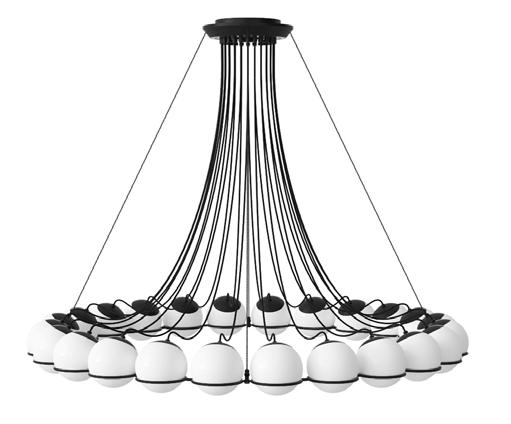
Above: ‘Le Sfere’ by Gino Sarfatti, Flos/Astep, 1939-1970 (left). ‘Falkland’ designed by Bruno Munari for Danese, 1964 (right) Below: ‘Tre pezzi’ designed by Franco Albini for Cassina, 1959 (left). ‘Lady’ by Marco Zanuso for Cassina, 1951 (right)

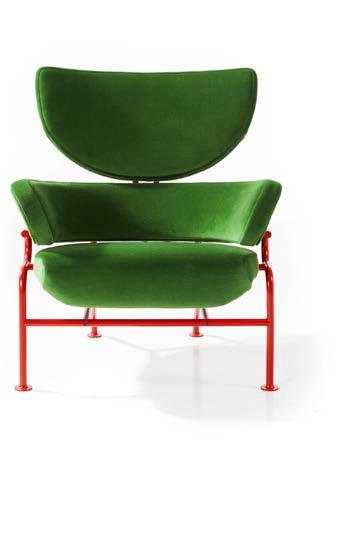
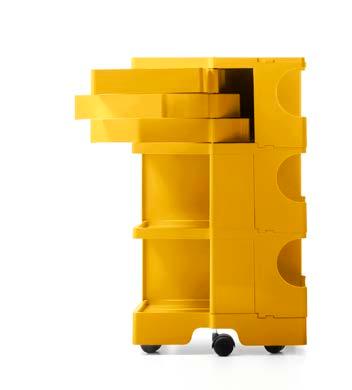
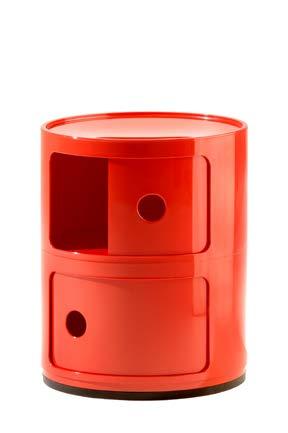
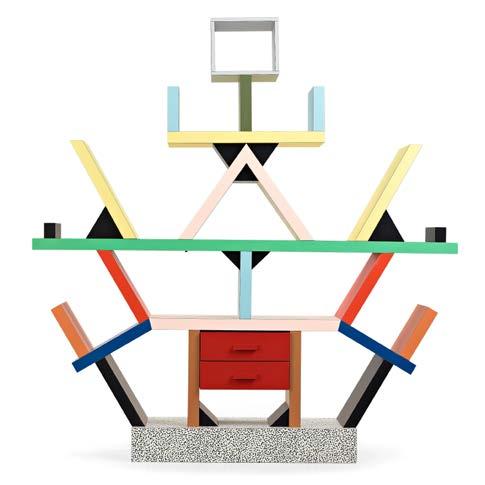
Above: ’Boby’ by Joe Colombo for B-Line, 1970 (left), ‘Componibile’ by Anna Castelli Ferrieri for Kartell, 1969 (right). Below: ‘Carlton’ by Ettore Sottsass for Memphis, 1981
米兰是一个实验型城市,追求创新和设计的先驱们总是能 在这里找到最理想的创作环境,成为这个不断创新城市中 的主导价值。想想当年达芬奇,为了实现他的才华和技 艺,曾在这里为卢多维科·斯福尔扎公爵工作了 20年。 米兰还是在数个世纪后兴起的未来主义的起源城市,其艺 术形式在1920年代和1930年代大肆表现噪音、机械和生产 世界,并为在工业世界中后来的创作者们提供了特殊的灵 感。因此也就并非偶然在不久之后,在创造力、功能性和 非常活跃的工业网络的集体要求下,开启了我们这个时代 最重要的表达方式之一,设计。 从4月 8日开始,三年展将 在由约瑟夫·吉尔玛领导的新Museo Permanente博物馆中 举行,米兰国际家具展推出了,由福尔玛 (Forma) 出版, 大卷册《设计之城。实验城市米兰》 (The Design City. Milano città laboratorio),在这本书中介绍了那些最杰出的 设计天才们以及在他们成名城市里的故事。 而我们会通过 他们著名的作品以及,注意这一点,仍在创作过程中的作 品,为你们讲述这些先驱的故事。 因为,设计的美正是因 为,通过工业制作,可以成为一种生动的语言。
Milan is a city/laboratory, where the seeds of innovation and planning have always found the perfect place to grow and dictate themselves as dominant values of an evolving society. Just consider Leonardo da Vinci, who to crown his dreams of ingenuity and technology, spent 20 years working for Ludovico Sforza. Milan is also the city that, centuries later, gave rise to Futurism, the art movement that celebrated the noise, machinery and world of production in the 1920s and ‘30s and which trained a particular sensitivity to industry in subsequent creators. It’s no surprise that this alchemy among creativity, functionality and an extraordinarily active industrial network soon led to one of the most important expressions of our time: design. Beginning on April 8, the Triennale dedicates the new Museo Permanente to design, headed up by Joseph Girma, and the Salone del Mobile celebrates the subject with a major publication, published by Forma, titled The Design City. Milano città laboratorio, which retraces the most brilliant talents and their stories in the city that made them famous. We tell you about the pioneers, through their best-known objects that - bear in mind - are still being made today. The amazing thing about design is that, thanks to industry, it’s a living language.


Above: ‘Arco’ by Achille and Pier Giacomo Castiglioni for Flos, 1962. Below: ‘P40’ designed by Osvaldo Borsani for Tecno, 1955



